Click the blue text | Follow us135editor
Liang Yunzhen, Liu Ruixing, Gao Siyuan
(Department of Education, Henan Normal University, Xinxiang, Henan 453007)
[Abstract] Interdisciplinary teaching, as a new educational approach, is of great significance for promoting the innovative development of AI education in primary and secondary schools and cultivating high-quality talents for the intelligent era. The interdisciplinary and multi-field characteristics of AI determine that AI education must rely on interdisciplinary integration. To explore the internal mechanism of the integration of AI education and disciplines, and to design interdisciplinary integration teaching activities in primary and secondary schools, this paper deeply analyzes the connotation of “AI + X” interdisciplinary integration teaching. Based on situated learning and activity theory, this paper clarifies the key components and characteristics of the “AI + X” interdisciplinary integration teaching activity system. A theoretical framework of “AI + X” interdisciplinary integrated teaching is constructed, which is supported by the deep integration of AI and disciplines, with the process of selecting teaching contents, clarifying teaching methods, creating teaching resources, and designing teaching evaluation, aiming to adapt to the future intelligent society. Based on this, this paper puts forward the practical strategies of “AI + X” interdisciplinary integration teaching from five aspects: goal orientation, content design, activity organization, resource creation, and evaluation methods, in order to provide reference for interdisciplinary integration teaching in primary and secondary schools and help improve the quality and efficiency of AI education in primary and secondary schools.
[Keywords] AI Education; Interdisciplinary Learning; Big Concept Teaching; Evidence-based Evaluation
1. Introduction
Since the 21st century, artificial intelligence technology has developed rapidly, transforming the social production process from a simple mechanical model to a large-scale automated intelligent model[1], and human civilization has transitioned from industrial civilization to intelligent civilization[2]. Fully promoting the development of AI education and facilitating the transition from “industrial education” to “intelligent education” is an inevitable choice for cultivating citizens needed for the future intelligent society. Countries around the world have incorporated AI education into their national strategies, and China has also issued a series of policy documents such as the “New Generation Artificial Intelligence Development Plan” and the “Higher Education AI Innovation Action Plan”, clearly proposing to “build a multi-level education system for artificial intelligence”[3] and “set up AI-related courses at the primary and secondary school stage”[4]. AI education plays an important role in cultivating innovative talents with intelligent literacy and promoting the development of students’ higher-order thinking and integrative thinking[5]. Due to the interdisciplinary nature of AI itself[6], standardized subject teaching is insufficient to cultivate students’ comprehensive ability to solve problems in complex situations[7]. Therefore, interdisciplinary integration education, which emphasizes role transfer, collaborative assistance, and practical experience based on real situations, will play an important role in the new model of talent cultivation[8]. The “Compulsory Education Curriculum Plan (2022 Edition)” identifies interdisciplinary themes as a key element of curriculum content, stipulating that all subjects must carry out interdisciplinary learning activities to strengthen the connections between subjects and enhance the comprehensiveness and practicality of the curriculum[9]. In this context, it is of great significance to explore the internal mechanism of the integration of AI education and disciplines and to construct a model of integration between AI education and subject teaching.
2. Literature Review
(1) Research on AI Education in Primary and Secondary Schools
AI education in primary and secondary schools has emerged and developed earlier in foreign countries. The UK focuses on integrating AI education with STEM education and conducts AI education through collaboration between universities and primary and secondary schools[10]; Singapore mainly conducts AI education through programming education, where teachers design practical teaching based on basic programming content and data application skills, guiding students to develop AI solutions using programming languages to address real-life problems[11]; the United States has pointed out in several national strategic reports that AI education should be popularized in primary and secondary schools through computer science education and STEM education, emphasizing the cultivation of thinking[12]. In summary, interdisciplinary integration (STEM) is the main trend of AI education in primary and secondary schools abroad[13].
Currently, AI education in primary and secondary schools in China mainly relies on information technology, computer science, maker education, and STEM courses, utilizing tools such as programming and robotics[14]. For example, Renmin University Affiliated High School has constructed an AI curriculum system for primary and secondary schools based on the framework of AI technology development, reflecting the cross-disciplinary innovation of AI technology with various subjects[15]; Wenzhou Middle School has developed elective courses based on real problems using Arduino creative robots and Python, implementing AI education[16]. Maker education emphasizes students’ hands-on creativity but often focuses too much on technical application while neglecting knowledge transfer. At the same time, STEM education needs to break through existing subject knowledge and thinking methods; relying solely on programming education and robotics education is insufficient to truly achieve interdisciplinary concepts[17]. AI education involves multiple disciplines such as mathematics, computer science, physics, biology, and psychology, covering a wide range of knowledge. Breaking out of the existing subject framework and thinking methods and deeply integrating AI education with existing subject curricula[18] will help cultivate students’ problem-solving thinking.
(2) Research on Interdisciplinary Integration Teaching
Currently, domestic research on interdisciplinary teaching is mainly related to STEM education. For example, Zhan Zehui et al. proposed a C-STEM education aimed at inheriting excellent traditional Chinese culture, constructing an ETIC interdisciplinary integration education framework from the dimensions of cultivation methods and ability development, and proposed four types of C-STEM project teaching models: experiential, skill training, inquiry learning, and innovative creation[19]; Zhang Yi et al. designed an interdisciplinary integrated course “Balloon Rocket Making” based on STEM education, targeting fifth-grade students, exploring STEM teaching from the aspects of learning interest, inquiry ability, and cognitive load, with results indicating that STEM-based teaching can stimulate students’ learning interest and enhance their inquiry ability[20]; Li Xing proposed a design-based STEM+C theoretical framework that integrates computational thinking cultivation into STEM education, and through teaching practice and analysis of teaching result data, found that the design-based STEM+C teaching framework promotes students’ development of problem-solving, critical thinking, algorithmic thinking, and collaborative thinking[21].
In addition, some researchers have made positive explorations and attempts in the practice of interdisciplinary integration teaching. For example, Zhou Weiming conducted interdisciplinary integration teaching from the perspective of the cognitive thinking characteristics of high school students, integrating literature, history, and philosophy in three types of courses: new lessons, exam review lessons, and comprehensive activity lessons[22]; Lu Wenbo designed interdisciplinary teaching examples by integrating knowledge from geography, history, language, and physics in the context of high school geography classes, cultivating students’ ability to perceive and appreciate the cultural environment from a multidisciplinary perspective[23]; Dong Hongwei et al. focused on the non-heritage projects of the “Belt and Road” initiative, integrating knowledge from natural, human, and social sciences to strengthen interdisciplinary integration, forming interdisciplinary thematic comprehensive courses to cultivate students’ core competencies[24]. Overall, the current practice of interdisciplinary integration teaching in China shows a scattered distribution and lacks a unified interdisciplinary integration paradigm. At the same time, with the introduction of AI education into primary and secondary schools, the current interdisciplinary integration teaching’s focus on AI education and its connection with AI education is not sufficiently prominent.
Internationally, the initiation and development of AI and interdisciplinary integration teaching have occurred earlier. Finland is one of the first countries to conduct programming education in an interdisciplinary manner, incorporating programming into other subjects[25]. In the United States, 11 high schools offer interdisciplinary courses[26], and interdisciplinary STEM courses have been introduced in primary and secondary schools, integrating programming courses such as Scratch and Python to cultivate students’ computational thinking[11]. Japan deeply integrates two modules of AI-related knowledge and AI technology with existing subject curricula, incorporating knowledge of basic AI into relevant subjects such as mathematics, physics, and information technology, and adding experiential and practical content related to AI technology into subjects like art and music, helping students learn and perceive AI from both knowledge learning and technology experience dimensions[18]. Thus, interdisciplinary integration has become a new approach to advancing AI education.
3. Theoretical Framework of “AI + X” Interdisciplinary Integration Teaching
(1) Interpretation of the Connotation of “AI + X” Interdisciplinary Integration Teaching
In the field of education, the understanding of interdisciplinary mainly includes two dimensions: subject integration and curriculum integration. From the perspective of subject integration, the independent teaching of subjects has many drawbacks[27], and the deep development of science requires teaching activities to be conducted in an interdisciplinary manner; from the perspective of curriculum integration, “connecting different subjects through interdisciplinary themes, emphasizing the acquisition of interdisciplinary knowledge and skills by students”[28].
This study’s interdisciplinary integration comprehensively combines the above two dimensions, analyzing relevant research in depth, and categorizes “AI + X” interdisciplinary integration teaching into four stages: multidisciplinary combination, subject integration, interdisciplinary integration, and interdisciplinary fusion, representing different degrees of interdisciplinary integration (as shown in Figure 1).
The characteristic of multidisciplinary combination is the parallel and cumulative nature of subjects. Multidisciplinary refers to viewing and analyzing the same problem from multiple disciplinary perspectives, where subjects remain independent of each other; combination refers to the involvement of subjects being similar to a “fruit platter”, where students learn concepts and skills about a common theme from various separate subjects. The characteristic of subject integration is that there is a primary and secondary relationship, with a dominant subject crossing[8], where the knowledge and skills acquired from different subjects are interrelated and inseparable. There will be preliminary integration between subjects, forming a main subject and parallel subjects, with parallel subjects serving as tools that permeate the main subject, facilitating understanding of that subject.
In the interdisciplinary integration stage, subjects are no longer distinguished by primary and secondary, and comprehensive practical courses are designed to achieve the overall attainment of several subject curriculum standards, with STEM education being an important form of current interdisciplinary integration.
The first three stages are the foundation for the gradual formation of deep interdisciplinary integration, focusing on the mastery of knowledge from various subjects. Although STEM education has shown a vigorous development trend, interdisciplinary learning that only focuses on certain subjects is insufficient; it needs to incorporate more subject knowledge and practice into the interdisciplinary system, thoroughly breaking down the barriers between subjects and elevating the cultivation goals to the level of problem-solving and thinking cultivation. Therefore, this study proposes “AI + X” interdisciplinary deep integration teaching, which is AI education from an interdisciplinary perspective, deeply integrating AI content and practice with specific subjects, relying on real-life situations, using problems or projects as carriers, and conducting large unit teaching based on interdisciplinary big concepts, completing the collaborative construction of knowledge from different subjects and fields through collaborative inquiry, thereby training skills and enhancing thinking.
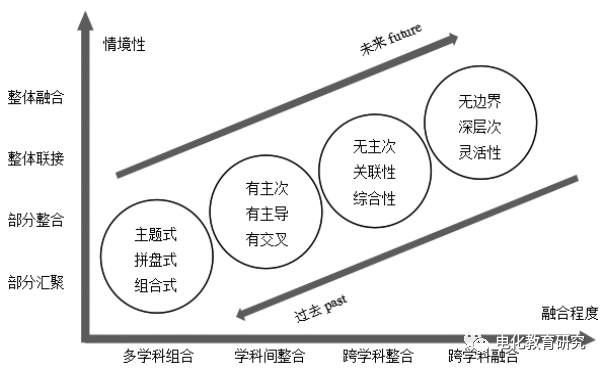
Figure 1 Four Stages of “AI + X” Interdisciplinary Integration Teaching
(2) Key Components and Characteristics of the “AI + X” Interdisciplinary Integration Teaching Activity System
Situated learning theory posits that knowledge is contextualized and develops continuously through activities. The focus of situated learning shifts from individual learners to the performance and learning of the activity system[29]. Activity theory provides a cross-disciplinary theoretical framework for analyzing different forms of human activities[30], summarizing the activity system into six interrelated components: subject, object, community, tools, rules, and division of labor. Here, the subject transforms the object for a certain purpose, and the goal of an activity system is to transform the object into the expected result. Situated learning and activity theory provide a theoretical basis for “AI + X” interdisciplinary integration teaching (as shown in Figure 2).
The key components and characteristics of the “AI + X” interdisciplinary integration teaching activity system can be summarized as follows: (1) Learner-centered. Students first identify complex problems in real situations, then analyze the problems using learning tools, and finally solve the problems through collaborative inquiry, culminating in presentation and communication. (2) Interdisciplinary learning content as the object. Students shape and transform the teaching content into learning outcomes (problem-solving solutions or artifacts) through learning, reflecting the goals of interdisciplinary integration teaching activities in this process. (3) Participants in interdisciplinary learning as the community. Learners, teachers who complete tasks together, and other members participate in learning activities, completing learning tasks and sharing learning resources, with the community’s formation enhancing the efficiency of interdisciplinary learning and promoting problem-solving and the construction of interdisciplinary knowledge systems. (4) Teaching methods that promote interdisciplinary learning as tools. Problem-based learning and project-based learning serve as mediators in the interaction between subjects and objects, regulating students’ learning activities and influencing learning outcomes. (5) Comprehensive teaching evaluation as activity rules. Evaluation criteria should evolve with the development of different activity forms over time, ultimately forming a comprehensive evaluation system based on activity content, focusing on the activity process, and aimed at enhancing capabilities. (6) Learning interactions within the community as the division of labor. Interaction among teachers is a crucial aspect, as the problems faced in “AI + X” interdisciplinary integration teaching require the comprehensive application of knowledge from various fields, necessitating interaction and communication among teachers from different subjects to jointly guide and facilitate the resolution of complex problems.
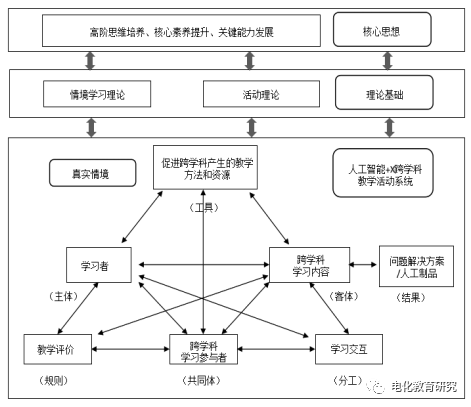
Figure 2 Theoretical Basis of “AI + X” Interdisciplinary Integration Teaching
In summary, the “AI + X” interdisciplinary integration teaching activity involves students engaging in project-based learning and problem-based learning around real situations, collaboratively constructing interdisciplinary teaching content into artifacts or problem-solving solutions, with teachers providing scaffolding and real-time guidance and feedback, promoting interdisciplinary learning through community interactions.
(3) Basic Framework of “AI + X” Interdisciplinary Integration Teaching
Based on the above analysis, the characteristics of interdisciplinary integration teaching are mainly reflected in three aspects: student development, subject tools, and multidimensional integration. First, interdisciplinary integration teaching activities ultimately aim at the comprehensive development of learners; second, the design of teaching activities reflects the interdisciplinary nature of teaching content and the situationality of teaching methods; finally, it emphasizes not only the integration of knowledge but also the integration of disciplinary thoughts and thinking. Therefore, this study proposes the basic framework of “AI + X” interdisciplinary integration teaching as shown in Figure 3. This framework is based on situated learning and activity theory, supported by the deep integration of AI and STEM subjects, humanities, and arts, and involves the processes of selecting teaching content, using teaching methods, creating teaching resources, and designing teaching evaluations, aiming to achieve the teaching goals of cultivating higher-order thinking, enhancing core competencies, forming key abilities, and adapting to the future intelligent society.
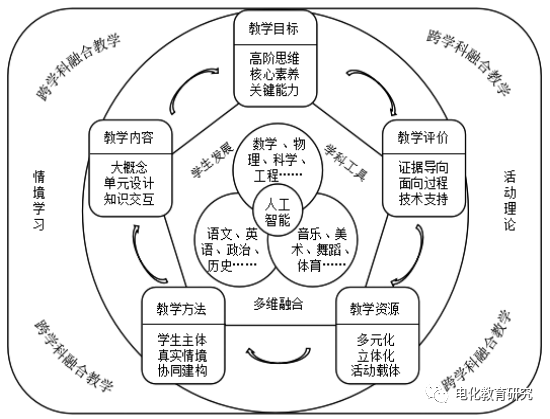
Figure 3 Basic Framework of “AI + X” Interdisciplinary Integration Teaching
1. Teaching Goals: Adapting to the Future Intelligent Society
As the demand for talent quality continues to rise in society, the drawbacks of standardized subject teaching, which disrupts the integrity and coherence of knowledge, make it difficult to meet the talent cultivation needs in the era of technological empowerment. At the same time, the rapid development of technologies such as the Internet of Things has made the connections between things tighter, and solving many practical problems often requires the joint participation of multidisciplinary knowledge, which requires learners to break away from the inherent single-subject thinking and consider and solve problems from a holistic perspective[7]. Therefore, the design and implementation process of “AI + X” interdisciplinary integration teaching must emphasize the enhancement of problem-solving abilities and the cultivation of higher-order thinking, with the ultimate goal of cultivating innovative talents that adapt to the future intelligent society.
2. Teaching Content: Reflecting Interdisciplinary Knowledge Interaction
Interdisciplinary refers to the interaction between multiple different subject areas, and teaching content should reflect the interdisciplinary interaction of knowledge. When determining teaching content, it should focus on practical problems, gradually deepening from everyday concepts to interdisciplinary big concepts, continuously enriching the interdisciplinary knowledge structure[31]. Therefore, interdisciplinary integration teaching should be based on problem situations in life, using themes or projects as the main entry point, integrating AI with subject content, exploring the opportunities for the integration of AI and subjects, promoting the achievement of subject curriculum goals through AI, and facilitating the transfer and application of AI-related knowledge in conjunction with the characteristics of specific subjects, achieving the crossover of “AI + X” content.
3. Teaching Methods: Promoting the Generation of Interdisciplinary Learning
“AI + X” interdisciplinary integration teaching requires teaching methods that can promote interdisciplinary learning as support. Interdisciplinary teaching emphasizes a learner-centered approach, and the design of interdisciplinary teaching activities should fully reflect the students’ central position, allowing sufficient exploration space for students; it needs to use practical problems as carriers, focusing on core concepts of the curriculum, and through a series of teaching activity tasks, helping learners integrate knowledge points from various subjects into practical activities for problem-solving, thus achieving interdisciplinary integration; it also requires inquiry to be incorporated into the entire process of interdisciplinary learning, as inquiry is the process of problem-solving, requiring learners to be bold in questioning and gradually activating their problem exploration thinking, forming a deep understanding of new concepts.
4. Teaching Resources: Supporting Interdisciplinary Teaching Activities
“AI + X” interdisciplinary integration advocates the integration of subject knowledge, focusing on real problems as research objects. Interdisciplinary learning, as a new learning paradigm, can mobilize students’ enthusiasm, and a vibrant learning atmosphere, mutual assistance in learning interactions, and comprehensive resource support make interdisciplinary learning more effective. Comprehensive resources are the foundation for implementing interdisciplinary integration teaching and an important carrier for conducting teaching activities, thus being one of the key components of “AI + X” interdisciplinary integration teaching to support the smooth development of interdisciplinary teaching activities.
5. Teaching Evaluation: Mining Interdisciplinary Learning Data
Interdisciplinary teaching evaluation is conducted based on various learning evidence generated during the learning process. Evidence-based learning provides a feasible path for solving complex problems, reflecting the learning process, proving learning occurrence, and presenting learning outcomes through evidence; on the other hand, it regulates learning through evidence, promoting the formation of problem-solving solutions and enhancing individual capabilities and learning performance[32]. One of the main characteristics of evidence-based learning is its emphasis on the enhancement of learners’ abilities, focusing on evidence collection to support comprehensive evaluation throughout the process[33]. “AI + X” interdisciplinary integration teaching places greater emphasis on cultivating learners’ ability to solve practical problems, thus it should focus more on the actual ability assessment of learners, integrating evidence-based assessment throughout the teaching process, which helps optimize teaching effectiveness.
4. Practical Strategies for “AI + X” Interdisciplinary Integration Teaching
“AI + X” interdisciplinary integration teaching emphasizes collaborative construction of knowledge in real problem situations, reshaping the goal orientation, content design, activity organization, resource creation, and evaluation methods of interdisciplinary integration teaching around the elements of higher-order thinking and their cultivation pathways. Based on this, this study proposes specific practical strategies aimed at promoting the innovative development of AI education through deep interdisciplinary integration.
(1) Precise Goals Based on Learner Profiles
Subject goals are a concentrated reflection of educational values and the detailed implementation of national core competencies in subjects. For students at the primary and secondary school stage, AI education should ultimately aim to cultivate innovative talents that adapt to the future intelligent society. Specifically, the teaching goals mainly include three dimensions: mastery of subject knowledge, enhancement of key abilities, and development of core competencies (as shown in Figure 4). Precisely positioning teaching goals is the foundation of an efficient classroom. The goals of “AI + X” interdisciplinary integration teaching focus on the comprehensive development of students from three levels: knowledge, ability, and competency, cultivating the abilities and competencies needed for students to adapt to the future intelligent society. Here, knowledge includes not only X subject knowledge and AI-related knowledge but also other knowledge related to interdisciplinary teaching. On the other hand, interdisciplinary integration teaching should focus on all students, establishing learner profiles with the support of intelligent technology, accurately analyzing learning situations, setting different expected outcomes for different students, and clearly describing the level of knowledge understanding to establish a gradient and depth goal system.
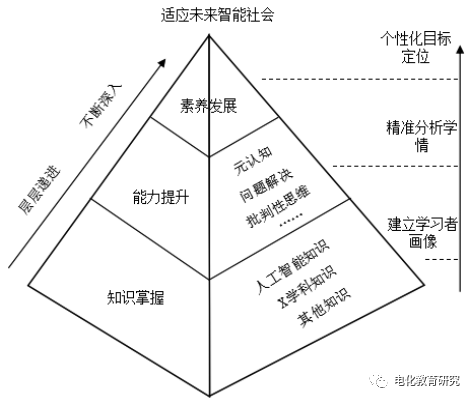
Figure 4 Multi-dimensional Goal Design of “AI + X” Interdisciplinary Integration
(2) Unit Teaching Design Based on Big Concepts
Initially, literature on big concepts mainly focused on their application within subjects, but in recent years, researchers have increasingly focused on the interdisciplinary application of big concepts. Research shows that designing interdisciplinary comprehensive curriculum units that promote deep learning can largely be achieved through a series of interdisciplinary big concepts[34], and unit teaching based on big concepts provides important support for interdisciplinary interaction. Big concepts can not only promote the integration of knowledge within subjects but also bridge the connections between subjects and between schools and society[35]. Designing large unit teaching from big concepts can effectively promote the implementation of core competencies in the unit.
The selection of subject big concepts is a key prerequisite for implementing large unit teaching. By analyzing the relationships between concepts and between situations and concepts, as well as the basic laws of students’ cognitive construction processes, subject big concepts can be selected[36]. Based on the analysis of teaching content from the perspective of big concepts to determine the foundation of the unit, systematic planning of progressive goals, determining the unit structure, and conducting unit assessments are necessary. This study takes “AI + Science” as an example, combining the implementation dimensions of the Next Generation Science Standards in the United States[37], designing a gradually complex and abstract concept sequence from real phenomena, subject sub-concepts to subject big concepts and interdisciplinary big concepts (as shown in Figure 5), aiming to help students form a complete concept system and promote the development of core competencies.
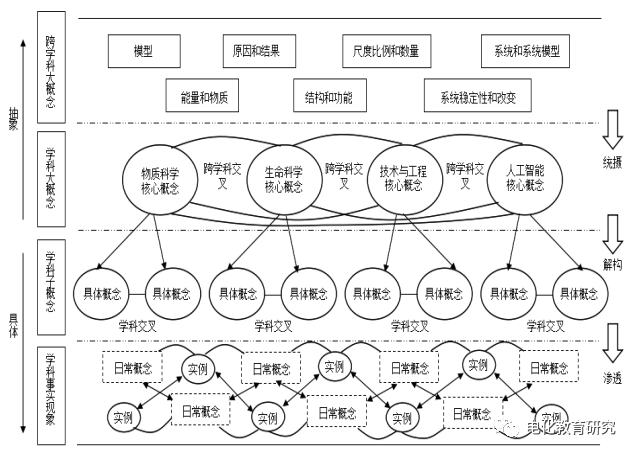
Figure 5 Hierarchy of Big Concepts in “AI + Science”
(3) Collaborative Knowledge Construction in Real Situations
Problem-based or project-based learning is the main teaching method for interdisciplinary integration[32], both emphasizing a learner-centered approach, using self-directed learning or group collaboration to address complex problems in real life, collaboratively constructing knowledge systems. Therefore, forming interdisciplinary learning communities is one of the important ways to promote interdisciplinary learning in schools. The emergence and development of interdisciplinary integration teaching rely on the collaborative cooperation of community members, where learners share perspectives, enhance knowledge and skills, and ultimately complete the process of collaborative knowledge construction in the discussed field (as shown in Figure 6).
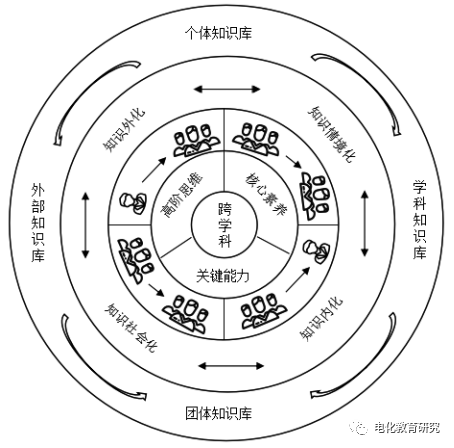
Figure 6 Collaborative Knowledge Construction in Interdisciplinary Learning
The types of knowledge in “AI + X” interdisciplinary collaborative learning include individual knowledge bases, group knowledge bases, subject knowledge bases, and external knowledge bases. Driven by real situations, community members actively establish relationships between knowledge and individual lives and social contexts through multiple rounds of knowledge acquisition, sharing, and creation, promoting the internalization and externalization, socialization and contextualization of knowledge, achieving the knowledge construction process from problem identification to problem-solving, and enhancing higher-order thinking, core competencies, and key abilities.
(4) Resource System Supported by Intelligent Technology
AI technology provides a multi-dimensional and diversified resource guarantee for the implementation of interdisciplinary integration teaching, serving as the support system for “AI + X” interdisciplinary integration teaching. Intelligent technology endows resource tools with intelligence, thereby amplifying their support for cognitive development[38]. On one hand, using new technologies such as VR and AR to create real-world teaching situations allows learners to participate in actual teaching activities, enhancing the learning experience[39]; utilizing IoT, big data, and cloud computing to achieve automatic perception and analysis of learning situation information, providing personalized learning services through precise assessment and predictive intervention. On the other hand, a rich repository of subject resources, knowledge graphs, visualization tools, 3D modeling tools, and online platforms can create contextualized memories of the learning process, effectively supporting learners in transforming abstract concepts into tangible artifacts, helping learners express interdisciplinary knowledge content through appropriate forms of learning outcomes.
(5) Evidence-based Comprehensive Teaching Evaluation
Unlike traditional evaluation methods, “AI + X” interdisciplinary integration teaching not only focuses on knowledge mastery but also on enhancing students’ innovative abilities and competencies. The evaluation methods should shift from a single paper-and-pencil test to a diversified evidence-based comprehensive assessment. Evidence-based comprehensive evaluation utilizes scientific methods to collect various learning evidence, demonstrating students’ learning processes, showcasing learning outcomes, and externalizing learners’ thinking processes and problem-solving processes, thereby scientifically and objectively assessing the developmental trends of learners’ internal thoughts and implicit abilities[33].
The development of abilities is often a continuous and dynamic process. Evidence-based comprehensive assessment can continuously monitor and objectively display changes in students’ implicit activities and psychological states, providing a new perspective for evaluating the effectiveness of “AI + X” interdisciplinary integration teaching. Evidence-based comprehensive assessment emphasizes the verifiability of learning outcomes, transforming traditional teacher-subjective measurement-based teaching evaluation into evidence-based, precise, and objective quantitative descriptions and analyses, which helps promote the precise achievement of teaching evaluations. This study provides detailed explanations of the evaluation purposes, evidence collection, evaluation content, and evaluation tools for the three stages of learning situation diagnosis, knowledge construction, and summary enhancement, as shown in Table 1.
Table 1 Evidence-based Comprehensive Evaluation Design
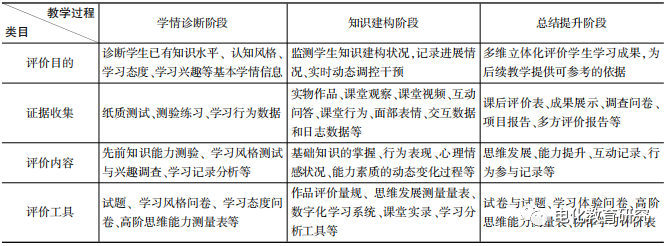
5. Conclusion
As social development becomes increasingly integrated and real problems become more complex, traditional talent cultivation models will face severe challenges. The arrival of the intelligent era calls for AI education, and the development of innovative talents demands interdisciplinary learning. Cultivating innovative talents with both AI and interdisciplinary literacy and promoting students’ comprehensive ability enhancement towards the future should be the direction of educational efforts. Therefore, how to effectively integrate AI with other subjects to promote the development of students’ higher-order thinking, core competencies, and key abilities is the focus of this research. This paper first organizes and summarizes existing related research, deeply interpreting the stages and connotations of interdisciplinary integration; secondly, based on situated learning and activity theory, it discusses the key components and core characteristics of the “AI + X” interdisciplinary teaching activity system, constructing a theoretical framework for “AI + X” interdisciplinary integration teaching from six aspects: interdisciplinary integration characteristics, teaching goals, teaching content, teaching methods, teaching resources, and teaching evaluation; finally, guided by the theoretical framework, it proposes five practical strategies for “AI + X” interdisciplinary integration teaching, aiming to better promote the deep integration of AI with subjects, facilitate students’ comprehensive development, and contribute to the cultivation of innovative talents in the intelligent era. There is still a lack of empirical research on “AI + X” interdisciplinary integration teaching. How to further optimize the design process of “AI + X” interdisciplinary integration teaching, the application effects of this teaching model, and how to apply and promote it in practical courses will be the focus of future research.
This article was published in the 10th issue of the Journal of Educational Technology in 2022. For reprints, please contact the editorial office of the Journal of Educational Technology (official email: [email protected]).
Please cite as: Liang Yunzhen, Liu Ruixing, Gao Siyuan. “AI + X” Interdisciplinary Integrative Teaching in Primary and Secondary Schools: Theoretical Framework and Practical Strategies. [J]. Journal of Educational Technology, 2022, 43(10): 94-101.
Editor: Zhang Rong
Proofreader: Fan Xiaohong
Reviewer: Guo Jiong
[References]
[1] Wu Xiaoru, Wang Zheng. Development Trends and Practical Cases of AI Education Applications. [J]. Modern Educational Technology, 2018, 28(2): 5-11.
[2] Cheng Sumei. Interdisciplinary Analysis of the Nature of Artificial Intelligence. [J]. Foreign Theory Dynamics, 2021(4): 155-163.
[3] Ministry of Education. Notice on Issuing the “Higher Education AI Innovation Action Plan”. [EB/OL]. (2018-04-03) [2021-12-06]. http://www.moe.gov.cn/srcsite/A16/s7062/201804/t20180410_332722.html.
[4] State Council. Notice on Issuing the New Generation Artificial Intelligence Development Plan. [EB/OL]. (2017-07-08) [2021-12-10]. http://www.gov.cn/zhengce/content/2017-07/20/content_5211996.html.
[5] Chen Kaiquan, He Yao, Zhong Guoqiang. Transformation of Information Literacy Connotation under the Perspective of AI and AI Education Goal Positioning: Discussing the Implementation Path of AI Curriculum and Teaching in Basic Education. [J]. Distance Education Journal, 2018, 36(1): 61-71.
[6] Liu Dong, Ma Tao, Rong Mei, Xu Tong, Chen Meiling. A Cross-Field Open Framework for AI Curriculum Group Construction in Primary and Secondary Schools. [J]. China Educational Technology, 2020(12): 16-21, 28.
[7] Dong Yan, Sun Wei, Xu Chang. Research on Interdisciplinary Learning under the Integration of Information Technology. [J]. Journal of Educational Technology, 2019, 40(11): 70-77.
[8] Yin Qun. Subject Integration Education: A New Pattern of Talent Cultivation in the Intelligent Era. [J]. Shanghai Educational Research, 2021(1): 92-96.
[9] Ministry of Education. Compulsory Education Curriculum Plan (2022 Edition). [M]. Beijing: Beijing Normal University Press, 2022.
[10] Li Dingyu, Qian Xiaolong. Experience and Enlightenment of AI Basic Education in Primary and Secondary Schools in the UK: Taking Scottish Secondary Schools and Barton Seagrave Primary School as Examples. [J]. Educational Exploration, 2021(9): 88-93.
[11] Zhang Dan, Cui Guangzuo. Research on AI Education in Primary and Secondary Schools. [J]. Modern Educational Technology, 2020, 30(1): 39-44.
[12] Han Qianqian, Cai Lianyu. Research on the Planning Goals and Characteristics of AI Education Promotion in Primary and Secondary Schools in the United States. [J]. Foreign Education Research, 2021, 48(1): 115-128.
[13] Ma Lu, Zhang Jie. A Review of Research on the Application of AI in Basic Education at Home and Abroad. [J]. Modern Educational Technology, 2019, 29(2): 26-32.
[14] Xie Zhongxin, Cao Yanglu, Li Ying. Exploration of AI Curriculum Content Design in Primary and Secondary Schools. [J]. China Educational Technology, 2019(4): 17-22.
[15] Zhou Jianhua, Li Zuolin, Zhao Xinchao. How Primary and Secondary Schools Can Conduct AI Education: Taking the AI Curriculum Construction of Renmin University Affiliated High School as an Example. [J]. People’s Education, 2018(22): 72-75.
[16] Xie Zuoru. The DNA of Maker Education. [J]. People’s Education, 2016(10): 28-31.
[17] Ding Meirong, Wang Tongju. Design and Application of a Triadic Teaching Model of Knowledge Construction, STEM, and Maker in AI Teaching. [J]. Journal of Educational Technology, 2021, 42(4): 108-114.
[18] Yu Yong, Xu Peng, Liu Weiyang. Current Status and Suggestions of AI Education Curriculum System in Primary and Secondary Schools in China: Insights from Japan’s AI Education Curriculum System in Primary and Secondary Schools. [J]. China Educational Technology, 2020(8): 93-99.
[19] Zhan Zehui, Zhong Baichang, Huo Limin, Huang Meiyi. C-STEAM Education Aimed at Cultural Inheritance: Value Positioning and Classification Framework. [J]. China Educational Technology, 2020(3): 69-76.
[20] Zhang Yi, Zhao Yaping, He Ling, Bai Qingyu. Design and Practice of Interdisciplinary Teaching Based on STEM. [J]. Modern Distance Education Research, 2017(6): 75-84.
[21] Li Xing, Zhang Yi, Huang Jing, Zhang Min, Zhang Yan, Wang Jue. Research on the Impact of Design-based STEM+C Teaching on Elementary Students’ Computational Thinking. [J]. China Educational Technology, 2019(11): 104-112.
[22] Zhou Weiming. Promoting Students’ Deep Understanding through Interdisciplinary Integration of Literature, History, and Philosophy: Taking Three Types of Courses as Examples. [J]. Secondary School Political Teaching Reference, 2021(9): 26-27.
[23] Lu Wenbo. Discussing Interdisciplinary Teaching in High School Geography: Taking “Regional Culture and Urban Landscape” as an Example. [J]. Geography Teaching, 2020(24): 37-39, 51.
[24] Dong Hongwei, Liu Yang. Research and Practical Exploration of Interdisciplinary Thematic Comprehensive Courses Focused on Core Competencies: Taking the Thematic Comprehensive Course “I Am a Non-Heritage Promoter of the Belt and Road” as an Example. [J]. Journal of Educational Research, 2021(S1): 139-140, 152.
[25] Li Yang. Research on the Interdisciplinary Children’s Programming Education Model Oriented to Computational Thinking: Based on the Experience and Enlightenment of Finnish Children’s Programming Education. [J]. Modern Educational Technology, 2020, 30(6): 19-25.
[26] NICHE. 2021 Best Private High Schools in America. [EB/OL]. (2021-01-01) [2022-01-04]. https://www.niche.com/k12/search/best-private-high-schools/?utm_source=gppc&utm_campaign=gppc_hs_int&gclid=EAIaIQobChMI-6D4gIyu8gIV3r2WCh2z5wd9EAAYASAAEgKIGvD_BwE
[27] Hirsch Jr E D. The Schools We Need: And Why We Don’t Have Them. [M]. New York: Anchor Books, 2010.
[28] Liu Denghui, Li Kai. Progress and Reflection on Curriculum Integration Research in American Schools. [J]. Foreign Education Research, 2017, 44(10): 73-85.
[29] Liu Qingtang, Ye Yangmei, Zhu Ke. Research on MOOC Learning Activity Design from the Perspective of Activity Theory. [J]. Distance Education Journal, 2014, 32(4): 99-105.
[30] Guan Jueqi, Zhu Zhitian. Analysis of Classroom Learning Activities in the Electronic Bookbag Environment. [J]. Journal of Educational Technology, 2018, 39(4): 59-65, 72.
[31] Zhao Huichen, Zhang Nayu, Ma Jiawen. STEM Education Interdisciplinary Learning Community: Promoting Changes in Learning Methods. [J]. Open Education Research, 2020, 26(3): 91-98.
[32] Laibhen-Parkes N, Brasch J, Gioncardi L. Nursing Grand Rounds: A Strategy for Promoting Evidence-Based Learning among Pediatric Nurses. [J]. Journal of Pediatric Nursing, 2015, 30(2): 338-345.
[33] Zhou Rong, Li Shijing. Evidence-Based Practice: Rational Transformation of STEM Education Practice Forms. [J]. Journal of Educational Technology, 2019, 40(7): 37-45.
[34] Chalmers C, Carter M L, Cooper T, et al. Implementing “Big Ideas” to Advance the Teaching and Learning of Science, Technology, Engineering, and Mathematics (STEM). [J]. International Journal of Science and Mathematics Education, 2017, 15(1): 25-43.
[35] Liu Hui. The Overall Teaching Configuration from the Perspective of “Big Concepts”: Discussing the Classroom Reform Oriented to Competency. [J]. Educational Research, 2020, 41(6): 64-77.
[36] Xu Qiuxuan, Yang Wenzheng, Lu Ya, Zhou Qinying. Construction and Application Research of STEM Integration Curriculum Design Model Incorporating “Big Concepts”. [J]. Journal of Educational Technology, 2020, 41(7): 86-93.
[37] NGSS. Next Generation Science Standards: For States, by States. [M]. Washington D.C.: The National Academies Press, 2013.
[38] Gao Linlin, Xie Yueguang, Zhang Zhuo. Research on the Construction of Intelligent Technology-Supported Inquiry Teaching Model. [J]. Journal of Educational Technology, 2021, 42(11): 92-99.
[39] Ertmer P A, Ottenbreit-Leftwich A. Removing Obstacles to the Pedagogical Changes Required by Jonassen’s Vision of Authentic Technology-Enabled Learning. [J]. Computers & Education, 2013(5): 175-182.